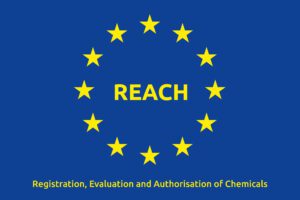The U.S. Environmental Protection Agency (EPA) has announced an eight-month delay in the reporting requirements for per- and polyfluoroalkyl substances (PFAS) under the Toxic Substances Control Act (TSCA). Originally set to begin in November 2024, the new submission period will now start in July 2025. This postponement is primarily due to issues with the EPA’s reporting software, which needs additional time for updates and testing to ensure it can handle the complex data submissions required for PFAS1.
Background
In October 2023, the EPA finalized rules governing the reporting obligations for PFAS under Section 8(a)(7) of the TSCA. The final rule requires manufacturers or importers of all PFAS-containing products, including both finished consumer products and their components, to provide a one-time report to the EPA on the presence of PFAS in their products for each year from 2011 to 2022, even if the products have been discontinued.
For US-based companies that import final products or assemble them domestically using imported or domestically manufactured components, the final rule requires streamlined reporting on each PFAS’s chemical identity, its maximum concentration in each article, its function, and the production volume by year. The EPA requires separate reports for each PFAS used. Domestic manufacturers face more comprehensive reporting, including disposal information and exposure risks associated with the PFAS.
Initially, the reporting period was slated to begin on November 12, 2024, and conclude on May 8, 2025. This had many companies scrambling to gather the historical information needed to meet these fast-approaching deadlines. This task has been especially burdensome for businesses based on the extensive 12-year reporting period, with some information not attainable despite due diligence.
In response to industry challenges, the EPA announced a delay in the reporting period’s opening in order to alleviate the pressure on companies struggling to compile and organize potentially vast amounts of historical data and to allow themselves more time to prepare their reporting software. The new reporting period runs from July 11, 2025, through January 11, 2026. For small manufacturer’s reporting exclusively as an article importer, the submission period will begin on July 11, 2025 and last through July 11, 2026.
Who Does This News Impact?
This delay impacts a wide range of stakeholders, including chemical manufacturers, importers, processors, and distributors who deal with PFAS. Environmental organizations and public health advocates are also affected, as the delay may impact the timeline for addressing PFAS contamination issues. Communities living near PFAS-contaminated sites might experience a delay in remediation efforts due to the postponed reporting requirements.
Actions to Prepare for the New Deadline
To prepare for the new July 2025 deadline, affected parties should:
- Review and Update Data: Ensure all PFAS-related data is accurate and up-to-date. Utilize the extra time to obtain any outstanding data.
- Review Reporting Software: Stay informed about updates to the EPA’s reporting software and participate in any available training sessions. The specific platform and detailed reporting instructions will be provided by the EPA closer to the submission period.
- Plan for Compliance: Develop a compliance plan that includes timelines and responsibilities to meet the new deadline.
Get Support
PFAS reporting requirements are a relatively new frontier regarding product compliance. If you need help identifying the PFAS in your manufacturing processes or supply chain, understanding your reporting requirements, or seeking out alternative substances for your products, contact our experts today. We can help you establish reporting practices, communicate with your supply chain, and create an effective plan for PFAS reporting.






